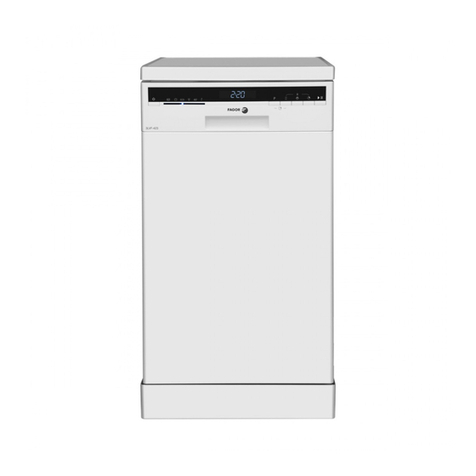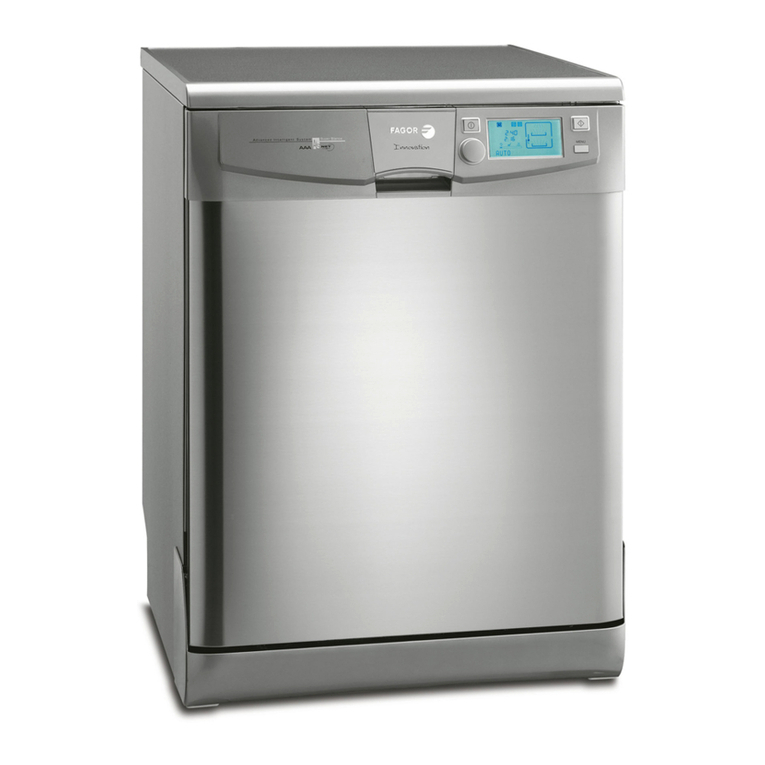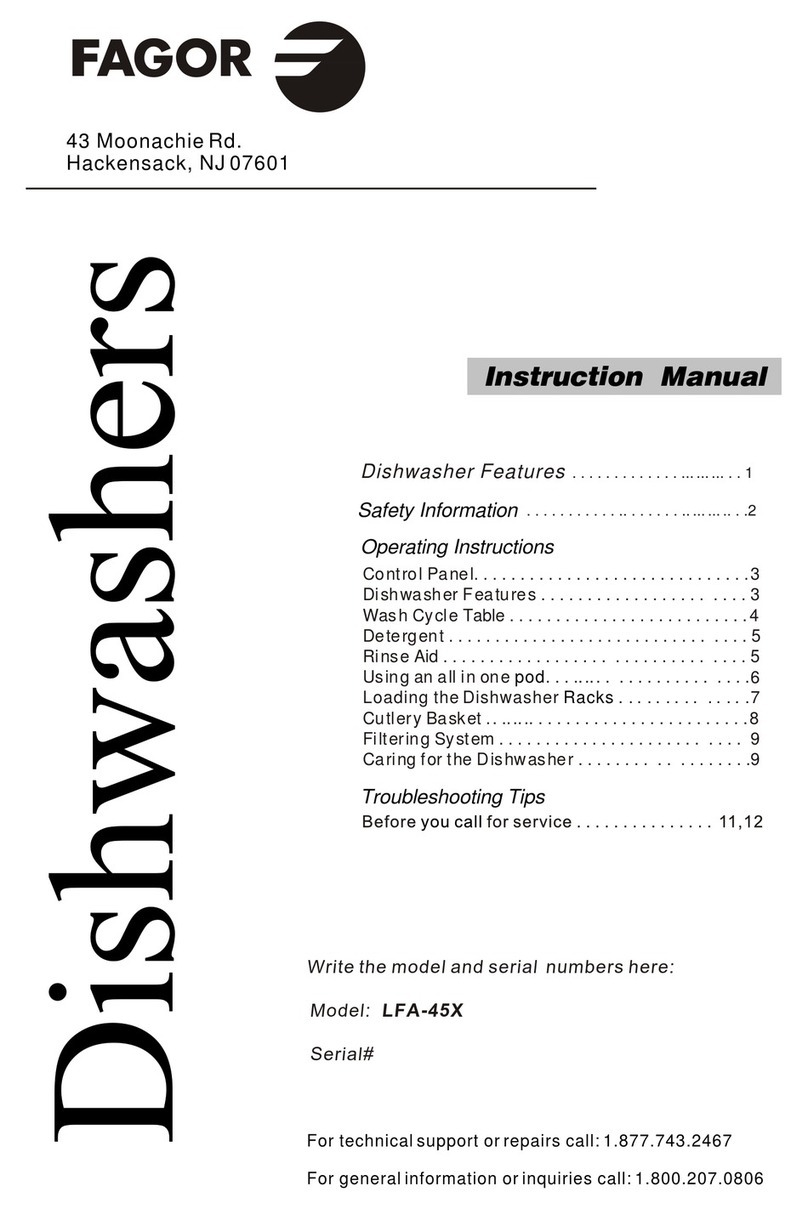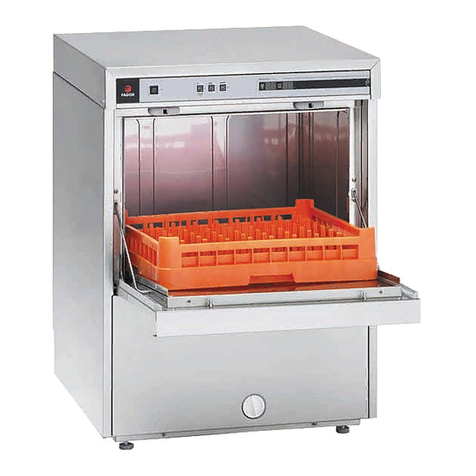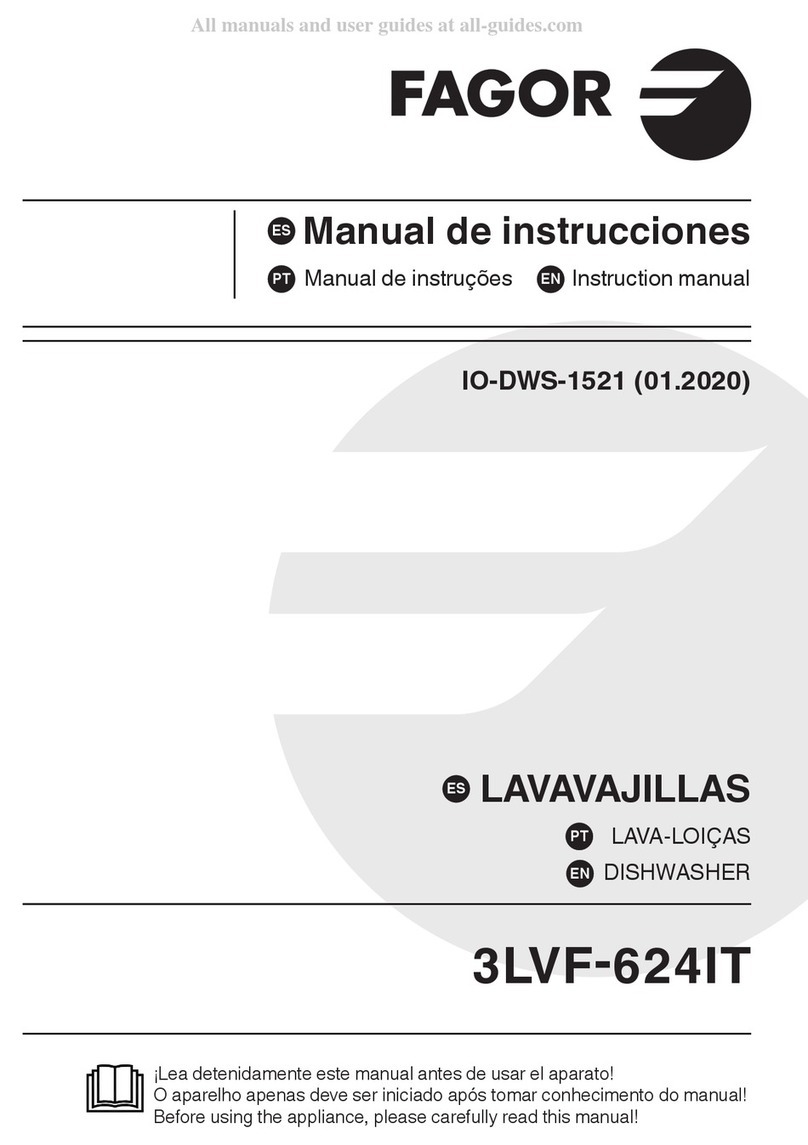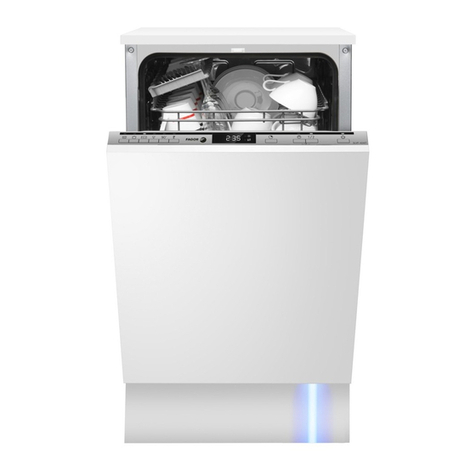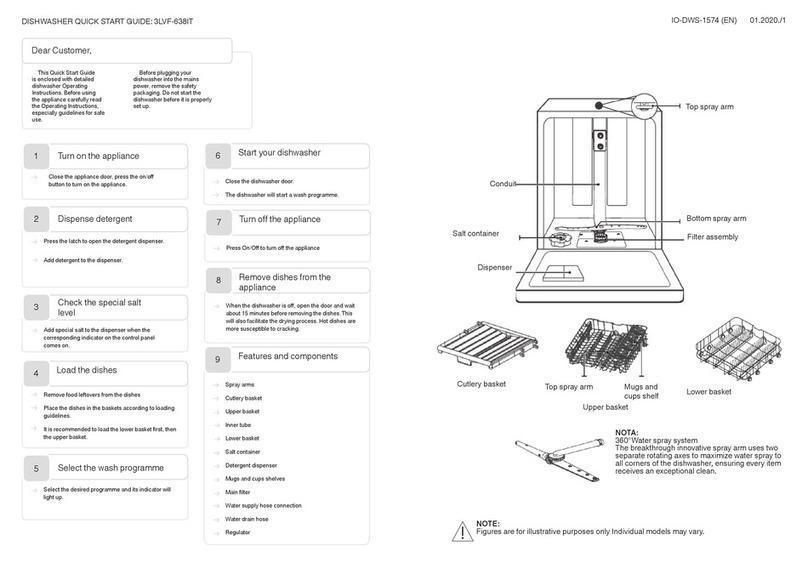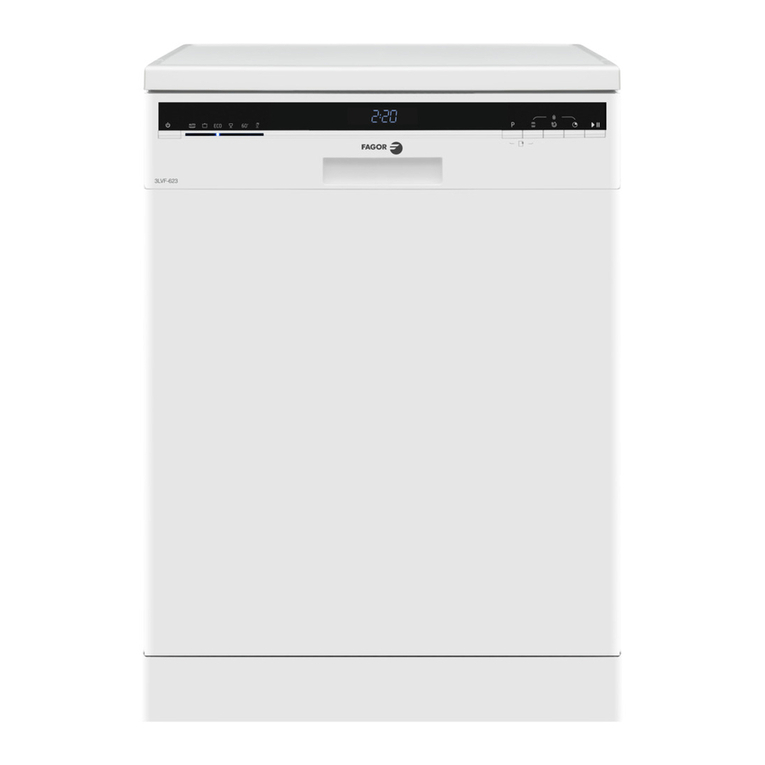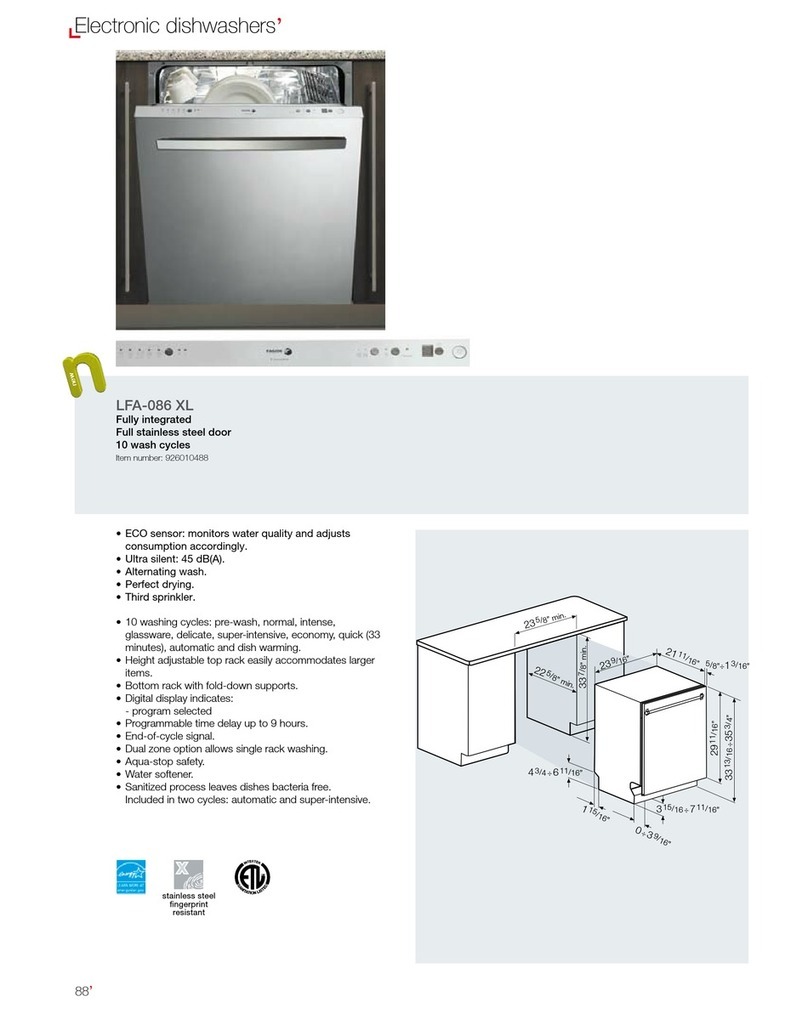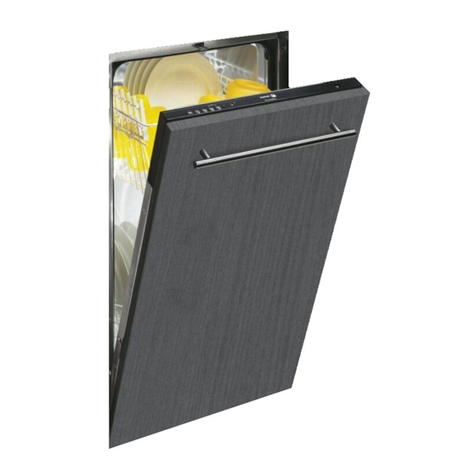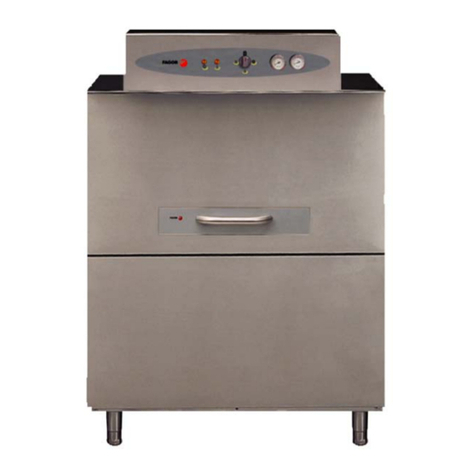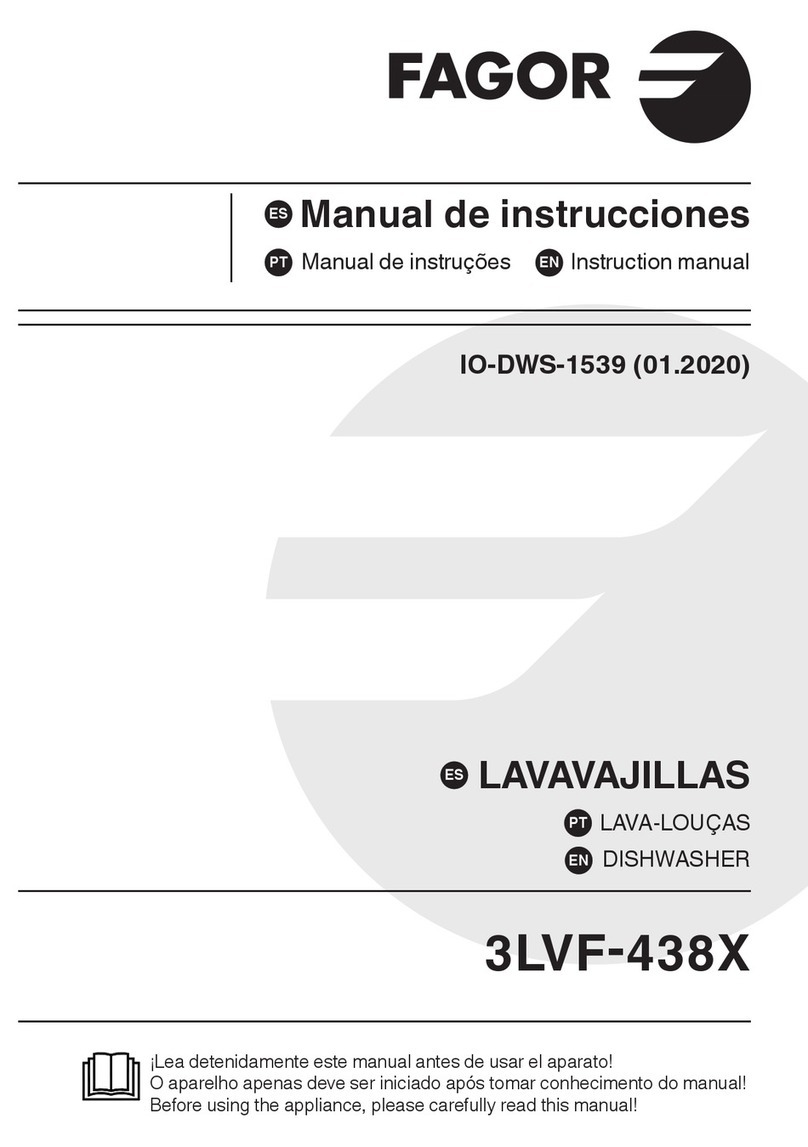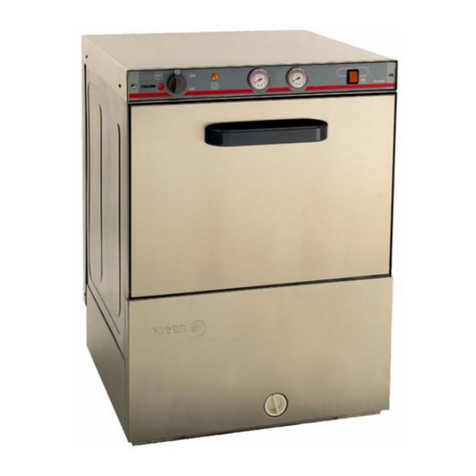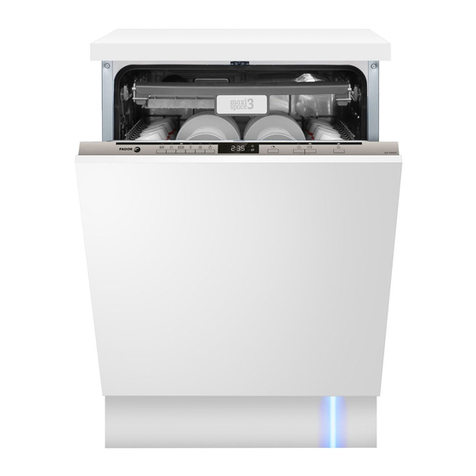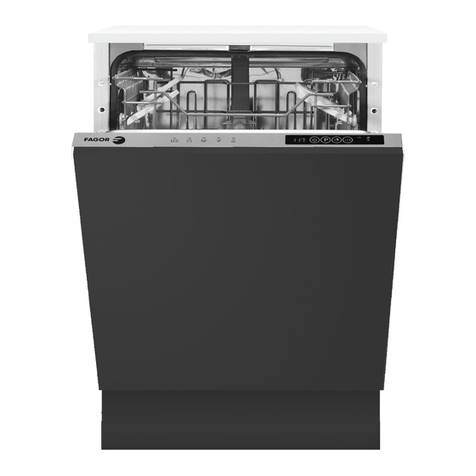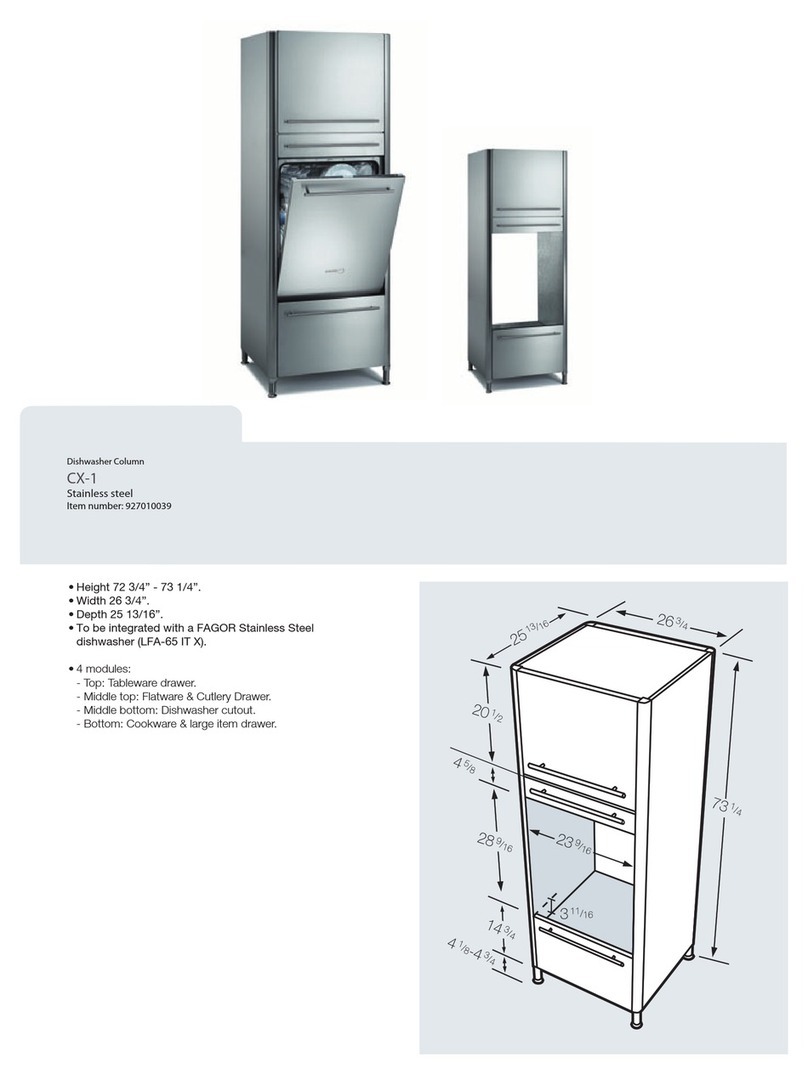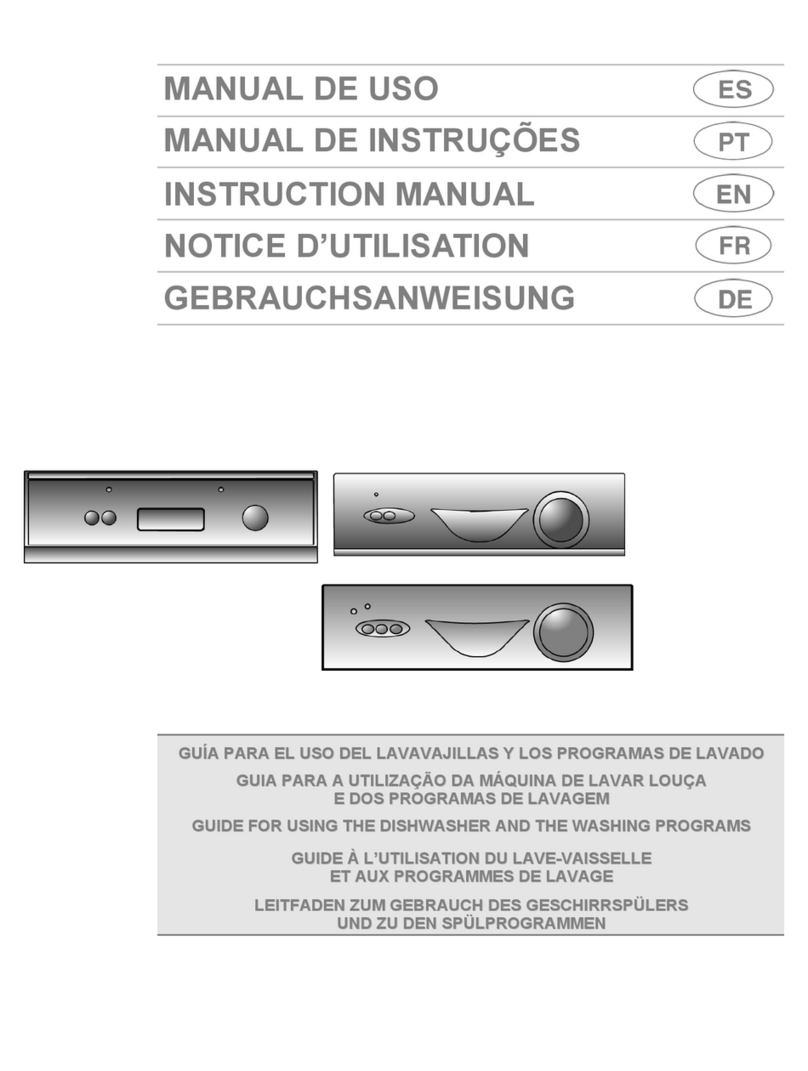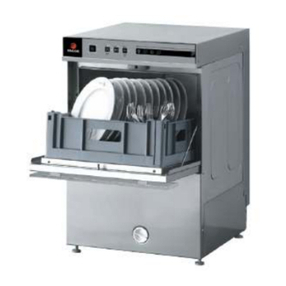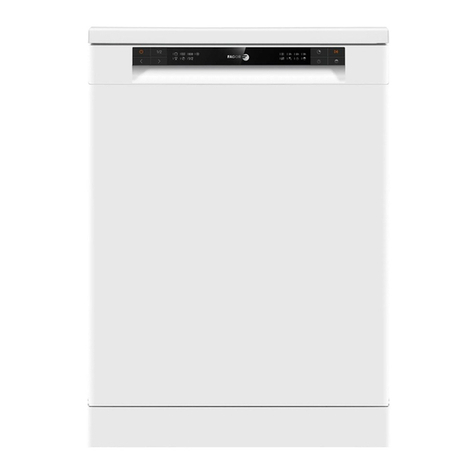
8
SAFETY INSTRUCTIONS FOR USE
Before you install the appliance
• Check the appliance for transport damage. Never install or
use a damaged appliance. If in doubt, contact your seller.
• Carefully read the operating instructions before plugging
dishwasher to a power outlet and using the appliance. Op-
erating instruction include tips that will help you avoid the
risk of injury and damage to the appliance.Keep dishwash-
er documentation in a safe place for possible future use.
• These operating instructions have been prepared for a
range of appliances and some features described herein
may not apply to your appliance.
• See installation notes (below).
• Refer the grounding system installation to a qualied elec-
trician.
• The manufacturer shall not be liable for any damage aris-
ing from the use of a non-grounded appliance.
• Before using the appliance, verify that the data given on
the rating plate matches that of local power outlets.
• Do not plug in the appliance before and during installation.
• Always use the original plug that came with the appliance.
• Do not use an extension cord to connect the appliance to
the wall outlet. Extension cords are not suciently safe
(e.g. they may overheat).
• Make sure the plug is easily accessible after installing the
appliance.
Child safety
• This appliance can be used by children aged 8 years and
older or persons with physical, mental or sensory hand-
icaps, or those who are inexperienced or unfamiliar with
the appliance, provided they are supervised or have been
instructed how to safely use the appliance and are familiar
with the associated risks. Ensure that children do not play
with the appliance.Children should not be allowed to clean
or maintain the appliance.
• Children less than 3 years of age shall be kept away unless
continuously supervised.
• Do not allow children to play with the appliance.
• Dishwashing detergents can be caustic and irritate the
eyes, mouth and throat. Read the safety notes from deter-
